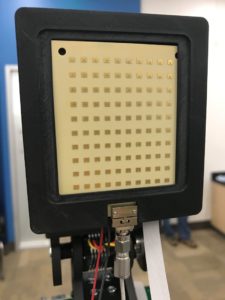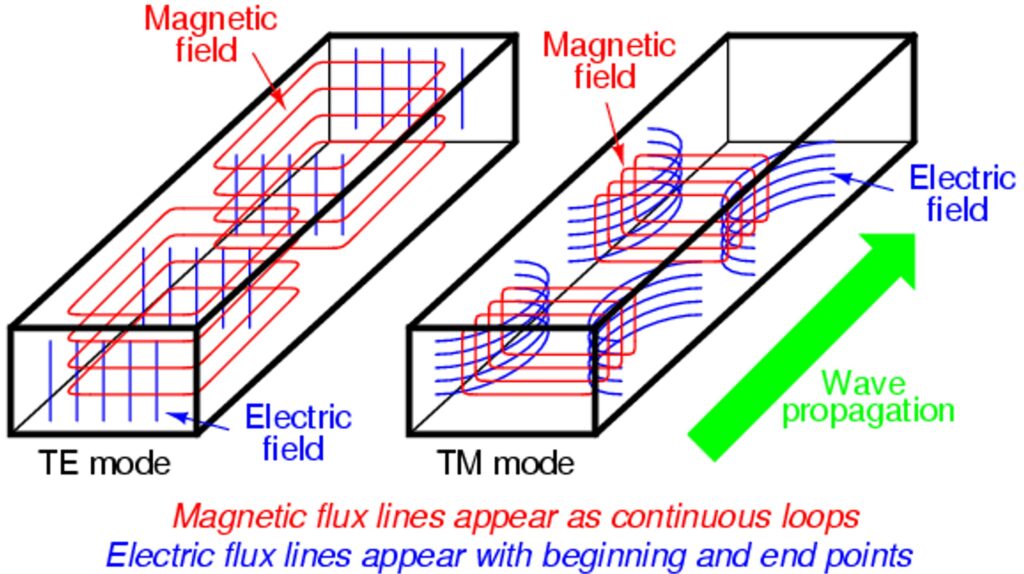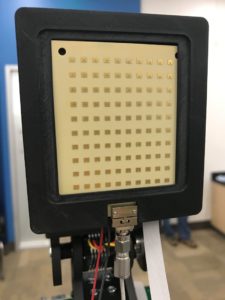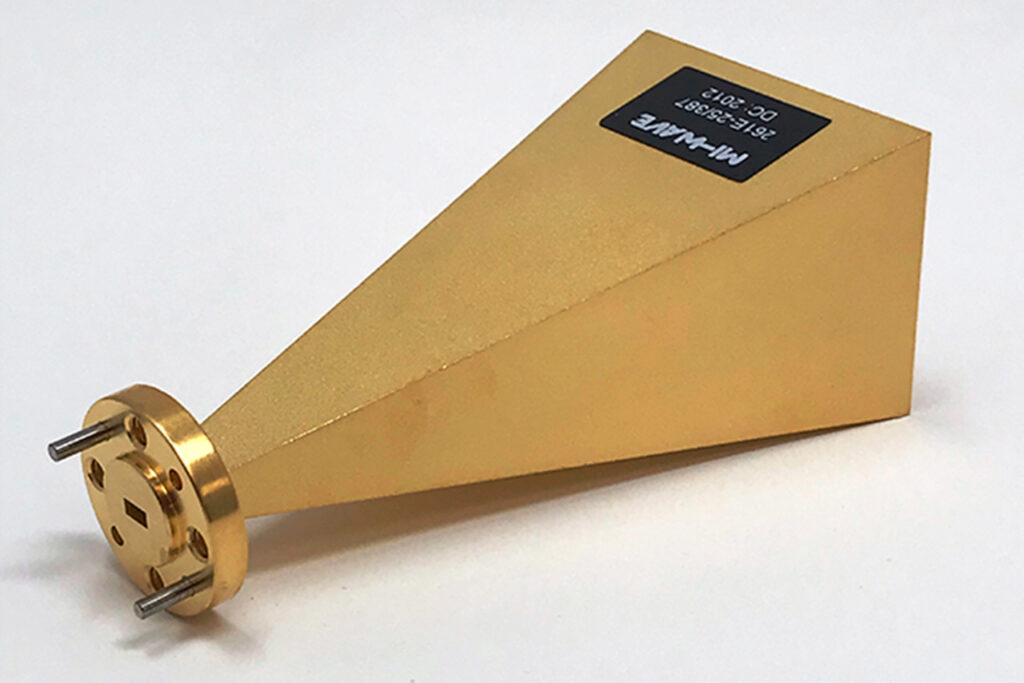
JUNE 17, 2024 BY AHARON ETENGOFF
Collected at: https://www.eeworldonline.com/can-dielectric-waveguide-antennas-boost-5g-efficiency/
5G base stations rely on phased arrays to steer signals and increase data rates. Beam steering circuits, however, consume power. Using waveguides could reduce energy consumption in base stations.
Waveguides are physical structures that direct electromagnetic waves from one point to another, confining energy within specific boundaries to control propagation, direction, and mode. While waveguide antennas are essential components in many telecommunications systems, they have yet to play a significant role in cellular base stations. This article explores the functionality of waveguides, compares metal and dielectric waveguide structures, and highlights key applications. It also discusses how dielectric and metal waveguide antennas can potentially improve 5G efficiency and contribute to the evolution of 6G.
Waveguide fundamentals
Waveguides facilitate controlled transmissions by using internal reflections to accurately direct electromagnetic waves along specific paths. Material properties and structural dimensions impact waveguide efficiency and performance, determining operating bandwidth, propagation, and frequency. Essentially, waveguides function as high-pass filters (Figure 1), allowing energy above a specific frequency, known as the cutoff frequency, to pass through while attenuating energy below this frequency.

Figure 1. Illustration of wave propagation in TE and TM modes within a waveguide, highlighting the orientation of electric and magnetic fields. (Image: Mepits)
Electromagnetic waves traveling through waveguides form distinct patterns or modes, including transverse electric (TE) and transverse magnetic (TM). These modes are the result of complex interactions between the wave’s frequency, the waveguide’s shape, and design materials. By manipulating TE and TM modes, engineers can precisely adjust signal bandwidth and accuracy to optimize waveguides for specific applications.
Metal and dielectric waveguides
There are two primary types of waveguides: metal and dielectric. Essentially enclosed pipes, metal waveguides use the (total) internal reflection of conducting sidewalls for wave propagation. Encompassing rectangular and circular designs, the cross-sectional shape of metal waveguides encircling a dielectric or air determines the frequency band. Although metal waveguides effectively transmit high-frequency radio waves, their large cross-sectional requirements, and physical inflexibility have traditionally limited low-frequency wave propagation.
Dielectric waveguides incorporate nonconducting materials such as glass, plastic, or ceramics. Leveraging reflections from dielectric interfaces to propagate waves, these waveguides use the refractive index contrast between structural materials and surrounding medium — such as air — to direct electromagnetic waves. Dielectric waveguides typically comprise a bar-shaped dielectric core surrounded by another dielectric with a lower permittivity; a configuration that efficiently facilitates the confinement and transmission of high-frequency waves. Polytetrafluoroethylene (PTFE) designs, for example, offer a relative permittivity of 2.1 for the inner conductor and air for the outer, achieving lesser loss at higher frequencies compared to coaxial cables.
One of the most common forms of dielectric waveguides is the dielectric slab, which consists of a planar film with a specific refractive index (known as nr) positioned between a substrate (ns) and a cover (nc). These elements work together to effectively guide light through total internal reflection, with the refractive index contrast between them ensuring efficient wave propagation. The differentiation in refractive indices typically spans 10−3 to 10−1, with the film thickness of the dielectric slab measuring ~1µm.
From optical fibers to millimeter-wave applications
Dielectric waveguides enable a wide range of applications, including:
- Optical communications: Optical fibers, a specific type of dielectric waveguide, comprise a circular core surrounded by dielectric material cladding. This design efficiently guides light, facilitating secure, high-speed data transmissions over long distances with minimal power loss and distortion.
- Integrated optical systems: Dielectric waveguides confine and direct light using planar strips or films. This configuration reduces drive voltage and power requirements while bolstering efficiency and performance for lasers, modulators, and optical amplifiers.
- Millimeter-wave and terahertz: Supporting TE and TM modes, dielectric waveguides play a crucial role in millimeter-wave circuits and terahertz applications due to their compact size and compatibility with millimeter-wavelength devices. Spectroscopy, sensors, radars, and imaging all use dielectric waveguides, with parallel-plate designs providing robust energy concentration and precise focus, along with minimal radiation fields for terahertz imaging systems and communication links.
Eliminate power-hungry phase shifters
5G next-generation base stations (gNodeB) use a variety of frequency bands, including sub-6GHz and millimeter wave (mmWave), to deliver high speeds and low latency connections. Commonly equipped with phased antenna arrays (Figure 2), 5G base stations boost signal strength and capacity with beamforming and massive multiple input, multiple output (MIMO) technology.

Figure 2. A phased array panel consisting of numerous antenna elements arranged in a grid pattern. (Image: ED2)
These phased antenna arrays operate by adjusting the phase and amplitude of small, individual antenna elements that combine to form a single, highly directional beam with targeted radiation patterns. According to some estimates, however, silicon-based phase shifters achieve only 10% power efficiency.
Dielectric waveguide antennas (DWAs), which rely on internal physical structures to efficiently direct electromagnetic beams, can potentially eliminate the need for power-hungry phase shifter chips.
Offering high efficiency, broad bandwidth, and low loss characteristics, compact DWAs easily integrate with other system components. Used extensively in microwave and millimeter-wave applications such as telecommunications and radar systems, DWAs can help improve 5G efficiency and play a crucial role in the development of 6G.
Notably, NTT DOCOMO has developed bending and pinching DWA prototypes for high-frequency cellular bands (28 GHz and above) that boost line-of-sight (LOS) communication and significantly minimize propagation distance by emitting radio waves near communication terminals.
Bent antennas (Figure 4) use intentional curvatures in the dielectric waveguide to emit radio waves at specific locations. Despite power losses caused by energy dispersal at the curvature, this configuration enables bent antennas to dynamically activate or deactivate specific areas of signal coverage.

Figure 4. Conceptual representation of a dielectric waveguide used in a 5G network, demonstrating how bending the waveguide can radiate radio waves to create and control coverage areas. (Image: NTT Docomo)
Incorporating a discrete dielectric element, pinching antennas (Figure 5) enable precise control over transmission and reception by selectively activating or deactivating radiation points along the waveguide.

Figure 5. Diagram of a dielectric waveguide pinching antenna in operation, demonstrating how pinching the waveguide can control the transmission and reception of radio waves to shape 5G coverage areas. (Image: NTT Docomo)
Pinching antennas significantly reduce power loss and efficiently bolster signal propagation compared to their traditional and bent counterparts. They also simplify design with discrete dielectrics that easily attach to waveguide structures without significant modifications.
Beyond DWAs: adapting waveguides for future networks
Many waveguide antenna types are evolving to meet 5G and 6G requirements. Some metal-based rectangular or conical gain horns, for example, can offer directional to omnidirectional and sector radiation patterns while supporting dual and circular polarization. Slotted waveguide antenna arrays (SWAAs), metal waveguides with slots originally used in radar, offer high gain and omnidirectional coverage for urban 5G deployments.

Figure 6. Small horn antennas cover 5G mmWave frequencies. (Image: Mi-Wave)
Similarly, substrate-integrated waveguides (SIW) and gap waveguides can potentially boost cellular antenna performance up to ~100 GHz. SIWs combine metal waveguide advantages with planar circuit integration, and gap waveguides achieve low-loss propagation through structured metal surfaces with pins that effectively replace the walls of conventional rectangular waveguides. Examples of prototype waveguide antennas that could one day support 5G or 6G include Mitsubishi Electric’s and Hiroshima Institute of Technology’s dual-polarized SWAA array and Gapwaves’ 28-GHz phased.
Summary
Most 5G base stations use phased antenna arrays to boost signal strength and capacity. These phased antenna arrays, however, rely on silicon-based phase shifters that achieve only 10% power efficiency. Dielectric waveguide antennas (DWAs) eliminate the need for power-hungry phase shifter chips, instead relying on internal physical structures to efficiently direct electromagnetic beams for transmission and reception. Used extensively in microwave and millimeter-wave applications such as telecommunications and radar systems, DWAs, along with other types of waveguide antennas, can potentially improve 5G efficiency and play a crucial role in the development of 6G.
References
Common Dielectric Waveguide Applications, Cadence
Dielectric Slab Waveguide Modes: TE and TM Guided Modes, Cadence
Phased Array vs Dielectric Waveguide Antennas, ED2 Corporation
Pinching Antenna: Using a Dielectric Waveguide as an Antenna, NTT DOCOMO
Waveguide Makes a Comeback in 5G—for Antennas, Microwaves & RF
What is a Waveguide, Types of Waveguides, Mepits

Leave a Reply